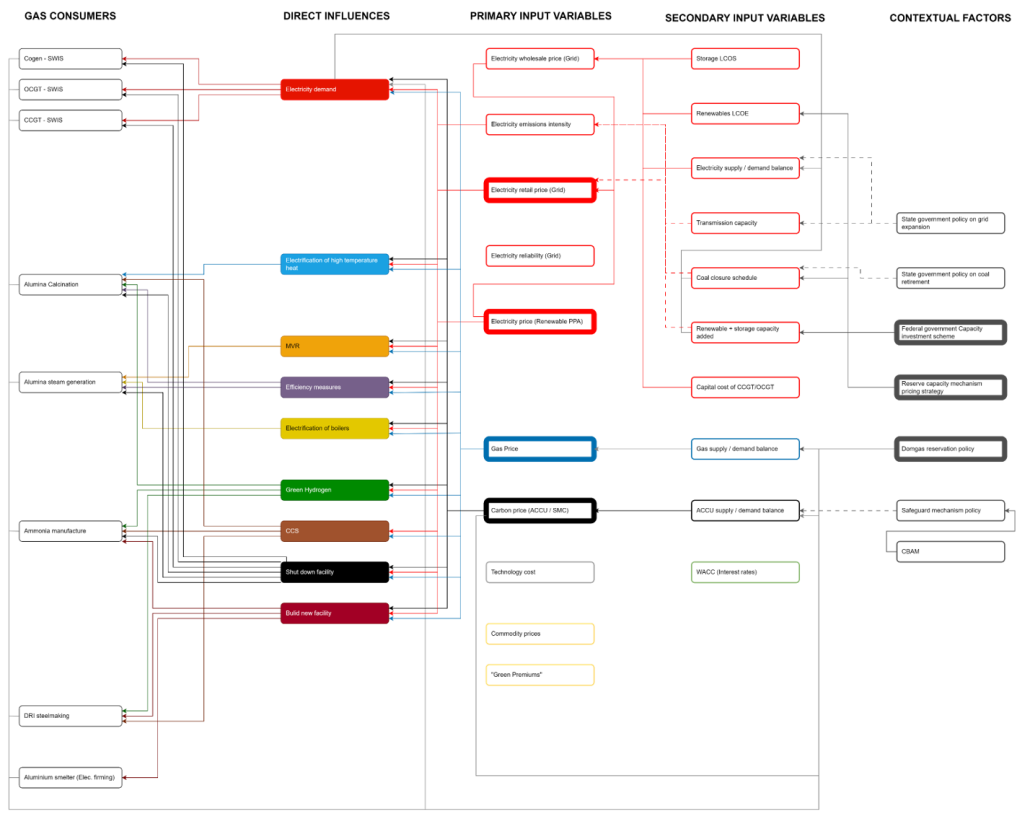Dampier Bunbury Pipeline – Energy Transition Scenario Mapping
A WA gas pipeline operator wanted to understand the future potential utilisation of their asset in the context of the Energy Transition
Complication
Future utilisation depends on a highly complex set of interacting influences with multiple feedback loops including:
- Electricity generation and usage patterns which in turn depend on;
- Electrification rate of industrial gas consumers
- Deployment of new grid scale renewable generation and storage capacity
- Uptake of EV’s
- Uptake of rooftop solar and home batteries
- …
- Future CCS potential for industrial consumers
- Policy decisions around renewables, gas and electricity network
- Techno-economics of industrial decarbonisation
Solution
Identify key variables
- The key input variables required for the modelling work were identified
- The different influences on those variables were then traced
- Variables were categorised as discrete and continuous
- Influences were assigned a level of priority based on their impact on the key input variables
Scenario development
- Internally consistent scenarios were developed to limit the number of variables in the model and eliminate unnecessary feedback loops
- E.g., Gas price impacts electricity price but does not have a short-term impact on electricity demand or generation capacity.
- Therefore, scenarios were developed for different gas price ranges. For example: a higher gas price is consistent with a weak or absent domestic gas reservation policy, coupled with higher renewables penetration
Modelling and sensitivity analysis
- Electricity supply and cost were modelled under a range of scenarios based on assumed discrete variable outcomes to determine likely generation mix and cost of supply
- Gas supply and cost were modelled under the same discrete variable outcomes to ensure internal consistency in the model
- These inputs were used to understand the likelihood of industrial electrification based on the commercial viability of the different potential solutions under different gas, electricity and carbon price scenarios.
Outcome
Insights included:
- Likely changes in patterns of gas usage by industrial consumers and gas power generators
- Risks of disruption due to technological developments, infrastructure bottle necks and global macro-economic conditions
- Potential for new industries wishing to use gas to decarbonise, e.g., DRI Steel making using gas before transitioning to hydrogen
- Required cost of electricity to break even with gas across a range of technologies with varying gas and carbon prices




